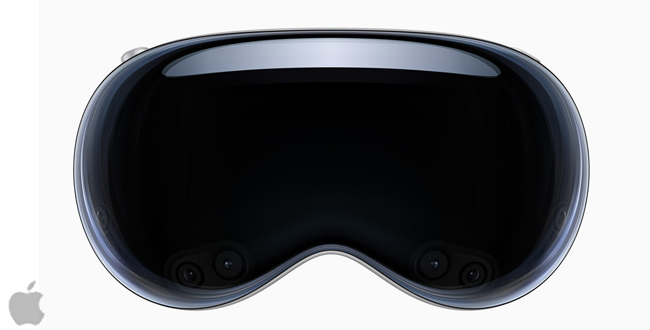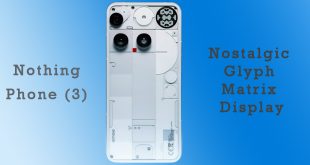Apple is poised to revolutionize the extended reality (XR) market with the upcoming Vision Pro M5, Vision Air, and Ray-Ban-style smart glasses. Explore Apple’s ambitious roadmap, new features, and how these devices will shape the future of wearable technology.
Apple is preparing to usher in a new era of extended reality (XR) with a comprehensive lineup of next-generation devices, including the Vision Pro M5, Vision Air, and its long-anticipated smart glasses. Industry analysts and supply chain reports reveal that Apple’s strategic roadmap is designed to establish the company as a dominant force in the rapidly evolving XR and wearable technology markets.
A New Chapter for Apple’s Vision Series
Apple’s Vision Pro, introduced as the company’s inaugural “spatial computer,” set a high bar for immersive digital experiences by seamlessly blending virtual content with the physical world. The device’s advanced micro-OLED displays, spatial audio, and precision eye tracking have redefined what’s possible in mixed reality environments. Building on this foundation, Apple is now preparing to expand its Vision lineup with several new models.
- Vision Pro M5:
Scheduled for mass production in the third quarter of 2025, the Vision Pro M5 will feature a significant processor upgrade from the M2 to the M5 chip, ensuring enhanced performance and responsiveness. While the overall design and feature set will remain consistent with the original Vision Pro, this model is expected to maintain Apple’s presence in the premium XR segment, targeting professionals and early adopters. Shipments are projected at 150,000–200,000 units in the initial launch phase. - Vision Air:
Marking a pivotal shift toward mainstream adoption, the Vision Air is slated for mass production in 2027. This device will debut with a substantially lighter form factor—over 40% lighter than the Vision Pro—thanks to a redesigned chassis that replaces glass with plastic and incorporates magnesium alloy for strength and reduced weight. Powered by Apple’s flagship iPhone processor, Vision Air aims to deliver an accessible price point, making spatial computing available to a broader audience. - Vision Pro 2nd Generation:
Looking further ahead, Apple is developing an all-new Vision Pro model for release in the second half of 2028. This next-generation headset will feature a complete design overhaul, significant weight reduction, and a Mac-grade processor, positioning it as a powerful tool for both professional and creative users.
Smart Glasses: Apple’s Entry into Everyday Wearables
In parallel with its Vision series, Apple is accelerating the development of smart glasses, targeting a launch window between late 2026 and 2027. Unlike the fully immersive XR headsets, these glasses will focus on practical, everyday functions:
- Ray-Ban-Style Smart Glasses:
Apple’s first smart glasses are expected to resemble the popular Meta Ray-Bans, but with superior build quality and deeper ecosystem integration. Initial models will not feature augmented reality displays but will offer audio playback, video recording, and AI-powered environmental sensing. Users will interact with the device via voice commands—leveraging an enhanced Siri—and gesture recognition, making hands-free operation seamless. - AI and Ecosystem Integration:
The glasses will incorporate cameras and microphones for capturing media, providing real-time translations, navigation, music playback, and contextual feedback based on what the wearer sees. Apple’s proprietary AI models will underpin these features, ensuring privacy and performance advantages over competitors relying on third-party AI platforms. - Market Impact:
Analyst Ming-Chi Kuo forecasts that Apple’s smart glasses could ship 3–5 million units in 2027 alone, potentially pushing the total market for this category beyond 10 million units. This surge is expected to drive widespread consumer adoption and set new standards for wearable technology.
Challenges and Future Prospects
While Apple’s hardware prowess and ecosystem integration provide significant competitive advantages, the company faces challenges in developing robust AI-powered operating systems and software tailored for XR and wearable devices. The initial wave of smart glasses will serve as a stepping stone toward more advanced augmented reality wearables, which remain several years away due to ongoing constraints in miniaturizing chips and batteries.
Industry observers note that Apple’s methodical approach—prioritizing quality, user experience, and ecosystem synergy—could enable the company to shape the future of spatial computing much as it did with the smartphone and smartwatch.
Conclusion
Apple’s forthcoming Vision Pro M5, Vision Air, and smart glasses represent a bold expansion into the XR and wearable markets. By combining cutting-edge hardware, AI-driven features, and seamless integration with its existing ecosystem, Apple is poised to redefine how users interact with digital content and the world around them. As the company prepares for multiple product launches in 2027 and beyond, the stage is set for a new wave of innovation that could transform both professional and everyday experiences.
 Digital Tech Byte Latest Technology News
Digital Tech Byte Latest Technology News





